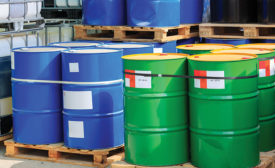Articles by Glenn Trout
As OSHA’s hazcom standard evolves
Agency plans to align with the UN’s GHS Revision 7
September 14, 2018
Get our new eMagazine delivered to your inbox every month.
Stay in the know on the latest safety trends.
SUBSCRIBE TODAYCopyright ©2024. All Rights Reserved BNP Media.
Design, CMS, Hosting & Web Development :: ePublishing


